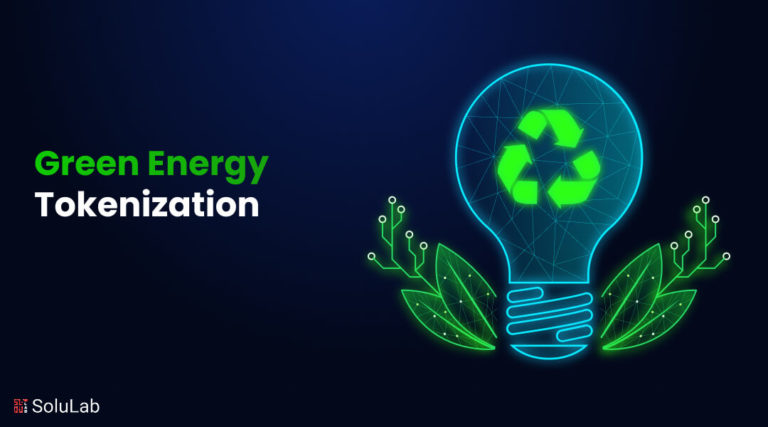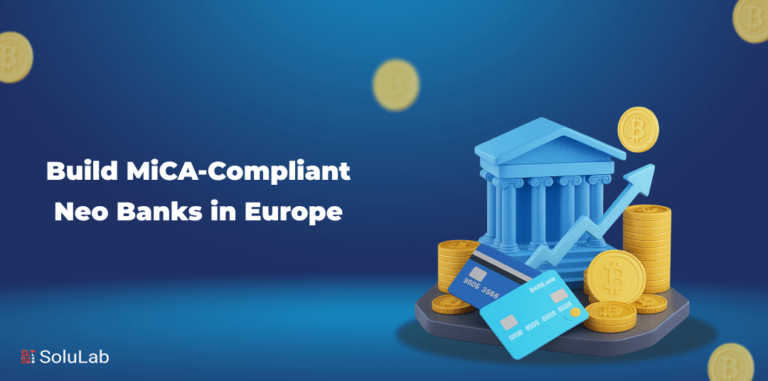Blockchain might be a confusing or complicated term to hear but its core concept is not quite difficult. It is rather a simple concept but people have a viewpoint that it is challenging to understand blockchain. To eliminate this confusion about blockchain, a simple explanation would be ideal. It is precisely the reason why our focus here would be on “Blockchain explained simply”.
What is Blockchain?
Blockchain is widely associated with cryptocurrencies but it is actually a lot more than just that. It has also been observed that blockchain and cryptocurrency are interchangeably used by many but they are not the same. Blockchain refers to the technology on which most cryptocurrencies are built. To state in the simplest terms, blockchain is a type of database. For a better understanding of blockchain, it would be great to understand what a database is.
A database is a collection of information that is electronically stored on computer systems. In databases, the data or information is usually stored in a structured tabulated format for ease and convenience of searching as well as filtering when looking for specific information. A blockchain gathers information in groups referred to as blocks that hold the sets of data or information. These blocks have specific storage capacities and when they are filled, they are chained onto the previously filled ones resulting in the formation of a chain of data known as a blockchain.
History of Blockchain
The first introduction of the idea of blockchain technology was in the year 1991 by two researchers W. Scott Stornetta and Stuart Haber. Stornetta and Haber in their whitepaper named “How to Time-Stamp a Digital Document,” explained the use of a continuous chain of timestamps for the purpose of recording information in a secure way. But until the creation of Bitcoin in the year 1998 put the technology into play. Bitcoin was developed to be a decentralized mode of money, instead of the money controlled by the government referred to as fiat money. The founder of Bitcoin, Satoshi Nakamoto built decentralized ledgers known as blockchain for the creation of a decentralized system that would function and could be trusted by people.
Understanding the Basics of Blockchain
Understanding the basics of blockchain is one of the major components when we are referring to ‘blockchain explained simply’. Blockchain is a decentralized public network. It allows different users including individuals as well as companies to securely store and transfer both information and currency instantaneously. In a blockchain, the data or information is stored in blocks and linked together in a permanent chain. With the addition of a new block to the chain, it becomes quite difficult to modify the previous blocks, thereby playing a significant role in making the entire chain more and more secure over time.
Special Characteristics of Blockchain That Make it Valuable and Unique
There are a few aspects that make blockchain valuable and unique.
High Accuracy
Accuracy is superior in the blockchain. Each of the actions in the blockchain is recorded, thereby making sure that none is left out. Once any action is recorded it is stored as a block of information with the timestamp and is kept secure. Anyone in the decentralized system can avail of the record.
Decentralized
The blockchain system is decentralized and therefore not stored on a single master computer or controlled by anyone bank or company. It is actually distributed over a number of computers in the network.
High Security and Permanent
Blockchain comes with high security and it is permanent. With the completion of each block on the chain, a permanent record of every transaction is created and available to each of the users of the blockchain. The combination of features provides a high level of security, thereby making the blockchain very difficult to alter.
With these valuable and unique aspects, blockchain finds a wide array of applications in different businesses.
Components of Blockchain
The three basic components of every blockchain are listed below
- Record – It refers to the information that can be of any type
- Block – It is a bundle of various records
- Chain – It is the chained links of all blocks
Working of a Blockchain
To eliminate the confusion among people, this ‘blockchain explained simply’ guide would prove to be of great help. With a basic understanding of blockchain, let us now understand how a blockchain actually works.
Regardless of the industry where blockchain is being used, the working of a blockchain follows these simple steps mentioned below.
Recording of a Transaction in a Record
In the first step, the record of the transaction lists the digital signatures from each of the parties along with all other relevant details. Here the recordings of transactions are kept in a record.
Checking the Validity of the Transaction
The next step involves inspecting the validity of the transaction made in the first step. The computer systems in the blockchain network inspect the transaction and make sure that it is real. The process is decentralized and hence occurs in the various nodes of the entire network.
Verification and Acceptance
After a transaction is declared valid, it is verified and then finally accepted as a real one. Each of the blocks contains a node referred to as a hash which is unique to every block. Now, the block carries its own hash before it. This is to make sure that the users always know about the location of the block in the blockchain.
Completion and Chaining
With the completion of the block, it is added to the chain. A block can contain several transactions. The hash carried by each block makes sure that each one is in the appropriate chronological order.
Pros and Cons of Blockchain
Understanding the advantages and disadvantages of blockchain is another major part of our ‘blockchain explained simply’ guide.
Pros of Blockchain
-
Higher Accuracy –
Blockchain is highly accurate in nature since there is no involvement of humans in verification. All the transactions made on the blockchain network are approved by a huge network of computers, thereby eliminating the involvement of humans in the verification process leading to an accurate record of all information.
-
Reduction of Costs –
In blockchain transactions, there is a reduction in costs because of the elimination of third-party verification. Generally, the customers pay a bank to verify a transaction, a notary for signing a document, or any minister for performing a marriage, and a number of other similar paid transactions. But in the case of a blockchain, the need for third-party verification is eliminated and hence the associated costs are also eliminated.
-
Decentralization –
One of the best things about blockchain is that it does not store any information in a central location but the blockchain is copied and distributed across a huge network of computers. By the spread of this information across a network, it becomes extremely difficult to tamper. Thus, it is decentralization that helps protect the information in the best possible manner since it cannot tamper with ease.
-
Transactions are Efficient –
Blockchain transactions are highly efficient in nature. When transactions are made via any central authority, it takes up a few days to settle but with blockchain transactions can be completed within a few minutes. Blockchain operates round the clock, 365 days a year without any holidays or off days, and is therefore highly efficient. It is particularly very useful for inter-border trades that generally take a longer time of time zone challenges and the fact that each of the parties should confirm payment processing.
-
Transactions are Private –
Transactions on the blockchain are private and confidential. Though a number of blockchain networks operate as public databases, the users in the blockchain network can only view the transaction history carried out in the network and not access the details of the transactions. None can access the identifying information of the users who made the transactions.
-
Transactions are Secure –
The security of data and information is undoubtedly one of the biggest benefits of blockchain. Every recorded transaction is verified for its authenticity by the blockchain network. All the computers in the network confirm the correctness of each of the transactions which are then added to the block in the blockchain. Every block has its unique hash code and if any information is edited, the hash code changes. This, in turn, makes it extremely difficult to change any information on the blockchain network without any notice.
-
Complete Transparency –
Blockchain is entirely transparent since most of them are completely open-source software meaning everyone can view the codes. It is quite beneficial for auditors to review for security. Moreover, it also indicates that there is no single authority that controls the codes or their editing because anyone can recommend upgrades or changes to the system. If a majority of users on the blockchain network agree that the code’s new version with the upgrade is fine, then the update takes place, thereby ensuring complete transparency.
Cons of Blockchain
-
High Cost of Technology –
Blockchain has several upsides but there are downsides too, the first being the high cost of technology. It is true that blockchain can help users save money on the transaction fees but the cost of the technology behind the same cannot be ignored at any cost, thereby making it quite costly to adopt.
-
Inefficiency in Speed –
Bitcoin is one of the most appropriate examples of inefficiencies of blockchain. The ‘proof of work’ system of Bitcoin takes about 10 minutes for the addition of a new block to the network. With this rate, the estimated speed that can be managed by the network is about 7 transactions per second, thereby clearly indicating the inefficiency in speed.
-
Scope of Illegal Activities –
Privacy and confidentiality in the blockchain network helps protect users from hacks. But at the same time, it also accounts for illegal activities on the network. Silk Road is the most common example of blockchain being used for illegal activities which was an illicit online drug marketplace.
-
No Regulation –
Blockchain network has no regulatory authorities which makes the network unmonitored. This is a big downside of blockchain which cannot be ignored in spite of so many advantages offered by the network.
Applications and Uses of Blockchain
When you are reading through ‘blockchain explained simply’, you must be keen to know about the applications and uses of blockchain. Owing to the striking features and fantastic advantages, blockchain finds a wide array of applications listed below.
- Banking and Finance
- Currency
- Healthcare Industry
- Property Records
- Smart Contracts
- Supply Chains
- Voting
With the advancement of technology on a regular basis, newer and newer applications of blockchain are coming up, and hence one of the most popular in recent times.
Future of Blockchain
The ultimate part of the ‘blockchain explained simply’ post discusses the future of blockchain. Since the inception of blockchain in the year 1991, it has seen a fair share of public scrutiny over the last three decades with businesses around the world speculating about the capabilities of technology and where it is headed in the time to come.
With an array of applications in technology already implemented and explored, blockchain is the trend with Bitcoin as well as cryptocurrency being the hype. Another industry that blockchain has positively impacted is the gaming industry. Let us understand a bit more about how the gaming industry has improved using blockchain.
- Using blockchain makes the gaming industry much more secure
- Readily enhances the ownership of all in-game assets
- Increases the value projection of the intangible assets
- Helps gain control over the games with ease
- Blockchain technology helps develop games and applications for an immersive user experience
- It enhances the payments mediums
It is the word in every investor’s mouth where blockchain has made businesses and operations of governments more efficient, accurate, cheap, secure, and without any middlemen.
Now, all we can do is wait and see what blockchain has in store for us in the time to come.
A unique and innovative blockchain project that needs expert handling, SoluLab is one of the top 3 blockchain developers in the world. Reach out to us today for your project’s free consultation.




